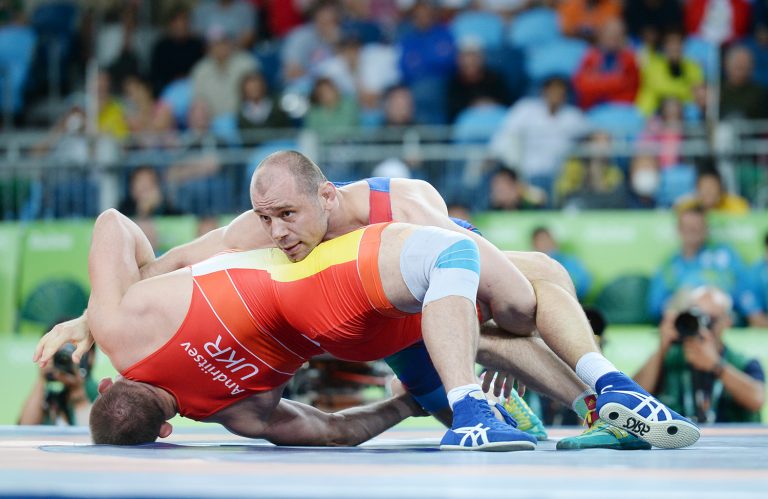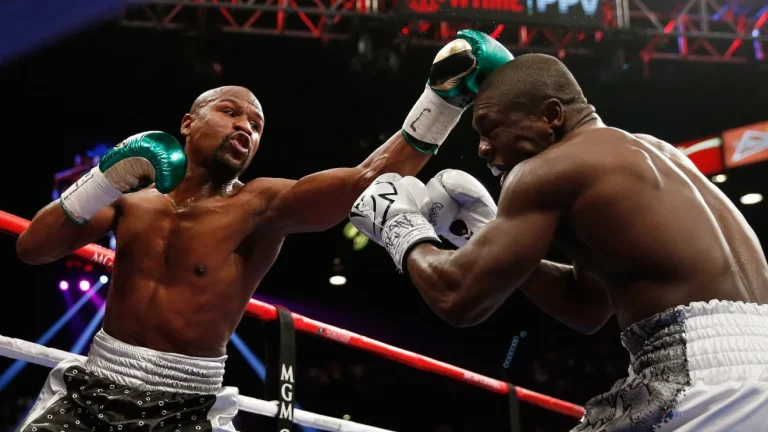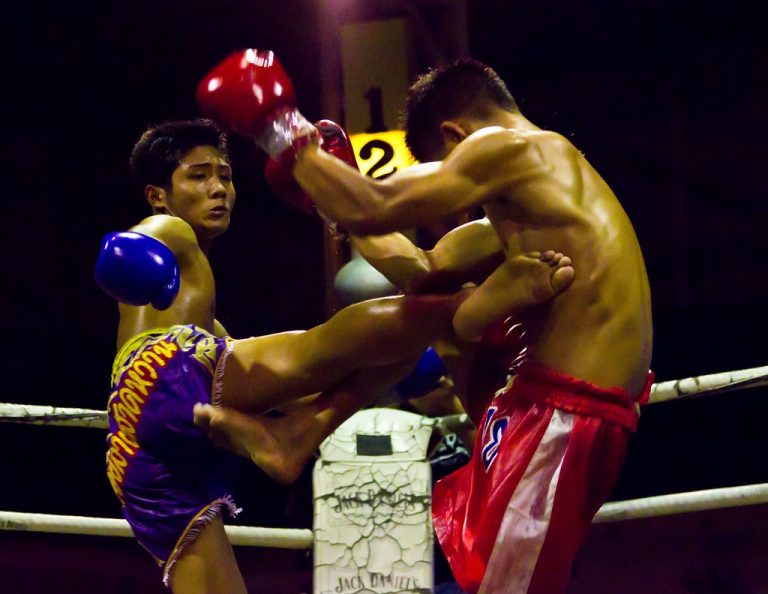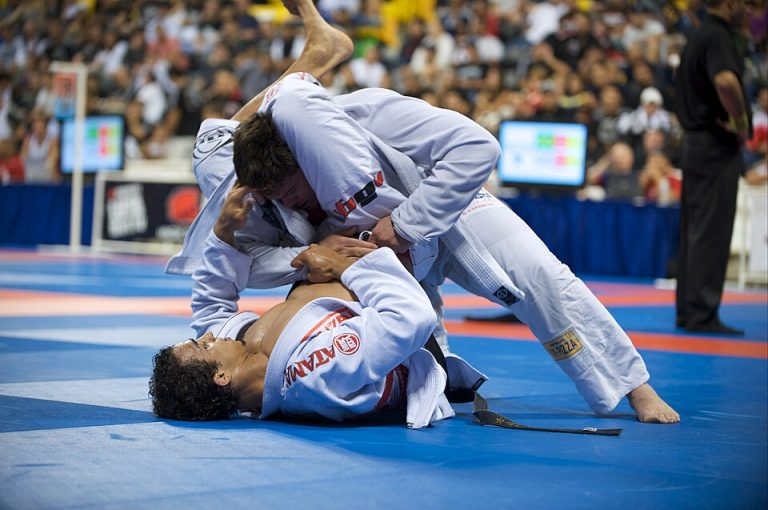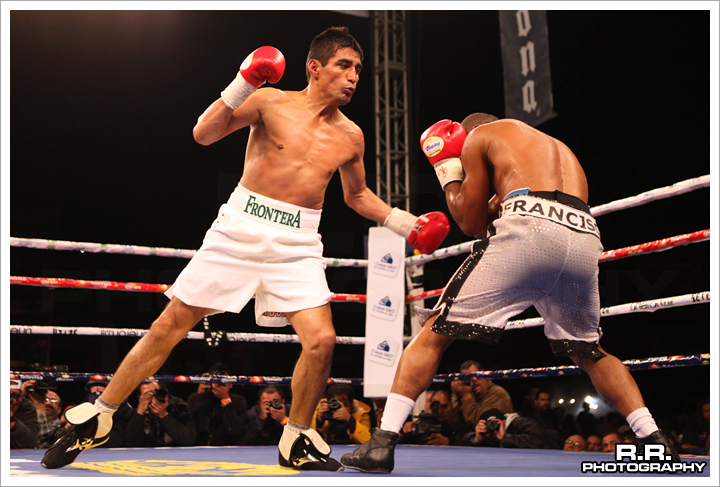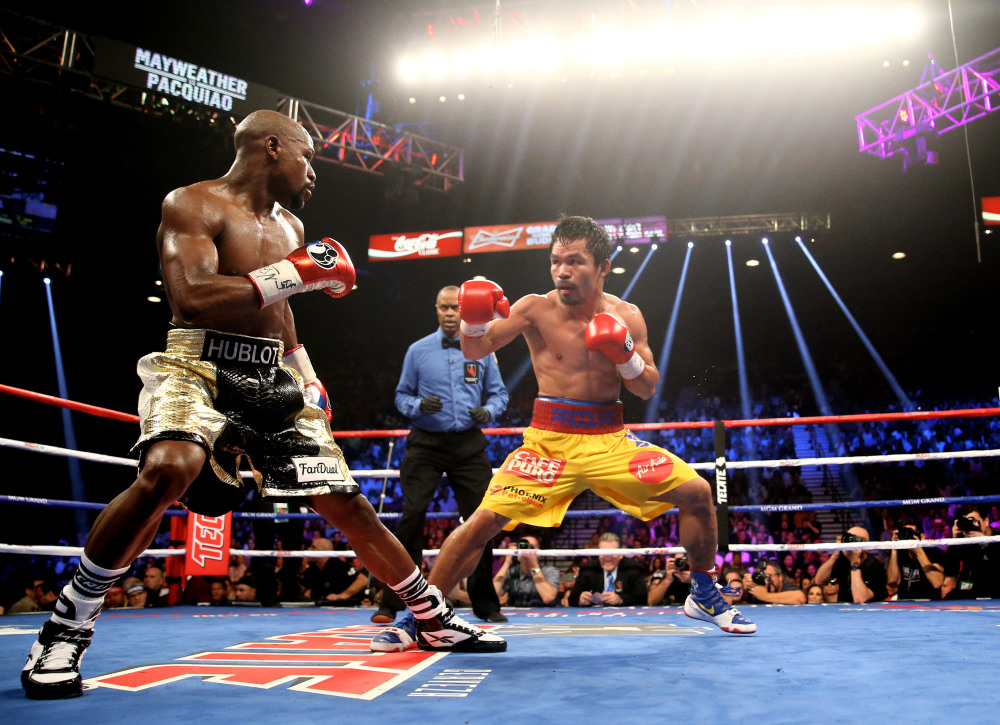
May 2, 2015; Las Vegas, NV, USA; Manny Pacquiao (right) against Floyd Mayweather during their boxing bout at the MGM Grand Garden Arena. Mandatory Credit: Mark J. Rebilas-USA TODAY Sports ORG XMIT: USATSI-222852 ORIG FILE ID: 20150504_mjr_su5_029.JPG
The orthodox vs. southpaw debate has been going on for ages. So, you’ve decided to step into the ring (or onto the mats) and throw hands. But wait—should your left foot be forward, or is that supposed to be your right foot? Choosing between the orthodox and southpaw stances isn’t as simple as “righties go orthodox, lefties go southpaw.”
Your stance can make or break your fight game, and here’s the kicker: you might be using the wrong one. Let’s break down everything you need to know to pick the perfect stance—or stances—for your fighting style.
Orthodox vs. Southpaw: What’s the Difference?
In striking sports like boxing, Muay Thai, or kickboxing, your stance determines which side of your body leads. Think of it like driving: most people stick to one lane, but switching lanes can help you avoid traffic (or, in this case, a knockout).
- Orthodox Stance: This is the “default” for right-handed fighters. Your left side (weaker arm/leg) leads, while your dominant right side stays back to deliver power punches and kicks.
- Southpaw Stance: This is the opposite of the orthodox stance. Your right side leads, and your dominant left side stays back. Only about 10% of fighters use this stance, which means southpaws often have a strategic edge—opponents aren’t used to their angles.
Fun fact: Manny Pacquiao, a lefty who fights southpaw, once said, “Being a southpaw is like having a secret weapon.” Meanwhile, Terence Crawford, a righty who fights southpaw, knocked down Erroll Spence with a jab from his power hand. What is the moral of the story? Rules are made to be bent.
Should You Follow Your Dominant Hand? (Spoiler: Not Always)
Yes, your dominant hand matters—but it’s not the boss of you. Most coaches will tell beginners to match their stance to their dominant side. For example, righties start orthodox to maximize power in their rear hand. But here’s the twist: some of the best fighters intentionally fight “backward.”
Why?
- Confusion Tactics: If you’re a righty fighting southpaw, your jab comes from your power hand. It’s unexpected and lands harder. That’s why Crawford was able to knock Spence down with a “jab” that was really a cross.
- Adaptability: Switching stances mid-fight keeps opponents guessing. Have you ever seen Demetrious “Mighty Mouse” Johnson fight? The guy switches stances like he’s changing TV channels.
But before you flip your stance like a pancake, master the basics first. Trying to fight using the “opposite” stance too soon can leave you off-balance and vulnerable.
Orthodox vs. Southpaw: Pros and Cons of Fighting in Your Natural Stance
Advantages
- Comfort Zone: Your natural stance feels like your favorite pair of sweatpants—easy to move in. You’ll learn techniques faster and build muscle memory.
- Powerhouse Strikes: Your rear hand (or leg) delivers knockout blows. In orthodox, your right cross or roundhouse kick becomes your “delete button.”
- Defensive Stability: A solid base helps you absorb hits and pivot quickly.
Disadvantages
- Predictability: Opponents know your playbook if you’re a righty fighting orthodox. Yawn.
- Weak-Side Jabs: Your lead hand (left for orthodox fighters) throws most jabs. You’re leaving power on the table if it’s your weaker side.
Pro tip: Train your weak side! Even if you stick to your natural stance, ambidextrous drills (like shadowboxing with both stances) can level up your game.
Why Fighters Like Terence Crawford Keep Their Power Hand Forward
Putting your dominant side in front turns your jab into a wrecking ball and your lead hook into a fight-ender. Here’s why it works:
- Surprise Factor: Opponents expect your power strikes to come from the rear. A lead-hand power jab? Chaos ensues.
- Pressure Fighting: Aggressive fighters (think Mike Tyson) benefit from a forward power hand. It lets you stalk opponents while threatening big shots.
But beware: If your weak-side defense isn’t solid, you’ll eat counters like they’re free samples.
How to Train Both Stances (Without Face-Planting)
Want to be a stance-switching wizard? Follow these steps:
- Master Your Natural Stance First: Nail your footwork, balance, and combinations before experimenting.
- Shadowbox in Both Stances: Spend 5 minutes each session mirroring your movements. It’ll feel awkward—like writing with your non-dominant hand—but stick with it.
- Spar with Intent: Start slow. Practice switching stances during light sparring to test angles and reactions.
Southpaw Secrets: Why Lefties (and Righties) Love This Stance
Southpaws aren’t just rare—they’re tricky. Their angles force orthodox fighters to adjust their entire strategy. Here’s how to exploit this:
- Foot Placement: Southpaws often position their lead foot outside their opponent’s, creating openings for straight lefts.
- Counter Opportunities: Orthodox fighters’ jabs come from their left hand, which aligns with a southpaw’s power side. Cue evil laughter.
Training southpaw can sharpen your defense against left-handed opponents even if you’re a righty.
Experiment, But Don’t Overthink
Your ideal stance depends on your body, style, and goals. Are you a patient counterpuncher? Maybe orthodox suits you. A pressure fighter? Try leading with your power side.
Read more:
ProForm 505 SPX Indoor Cycle Review: Is It Any Good?
Francis Ngannou Reacts to Video Showing Him Sparring Cyril Gane
Logan Paul Claims Floyd Mayweather Owes Him Money
Jake Paul Promises to Leave Boxing if UFC Improves Fighter Pay and Benefits
Training Martial Arts with Chronic Pain: How to Adapt Without Giving Up Your Passion


